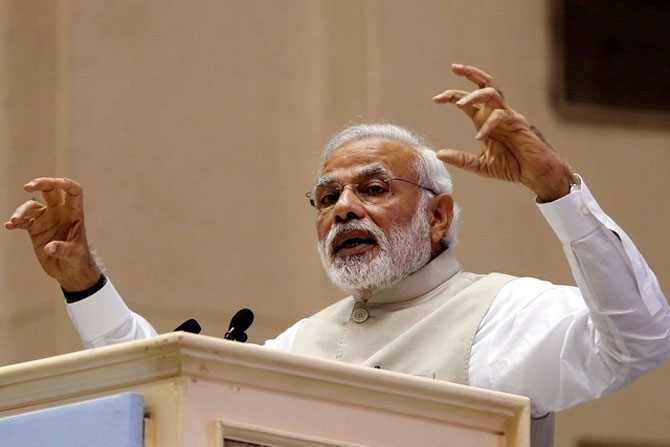 | « Back to article | Print this article |
Sustaining anything in the region of 7% growth should be good enough in a troubled and risk-laden world, says T N Ninan.

Three months ago, a Brookings Institution-Financial Times tracking index warned of emerging economies risk “leading the world economy into a slump, with lower growth and a rout in markets”. Those words will echo in many minds at the end of this past week, as the world suddenly looks like a dangerous place, and emerging markets even more so.
Over the past year, stocks and currencies have dipped in many emerging markets, including India. Over a five-year period, global stock indices have virtually doubled relative to plunging values in emerging markets. Money has been pulled out of emerging markets for several months. And if the last few days’ trends are anything to go by, the story is far from being over. George Soros is only one of many doomsayers.
Two of the original Bric economies that set the pace for a decade have slipped into recession - and a strengthening dollar has accentuated the decline. In dollar terms, Brazil’s economy has shrunk in the last couple of years by 25 per cent, while Russia’s economy has shrivelled 40 per cent.
China, while continuing to grow, is beset by transition issues and has become the primary source of global instability. The big risk is cross-country contagion through bankruptcies - and India has its share of debt-laden candidates for that scenario. Yet, through it all, India continues to look stable and healthy.
That’s if you view the country from outside. The perspective from within is quite different. Despite much activity by eager-beaver ministers in the Modi government, change on the ground has been slow and very much on the margin. Corporate profits in relation to GDP are at a decadal low. Corporate investment intentions have shrunk further, even as the number of stalled projects remains virtually unchanged.
In the infrastructure sectors, power generation has grown less than three per cent, and the railways have missed their freight traffic targets. Investment by the railways too has fallen short, causing the finance ministry to trim fiscal support. The commercial banks’ books will look worse in coming quarters as the Reserve Bank gets less indulgent about undeclared bad loans - provoking (so one hears) some troubled bank chiefs to beat a path to the Prime Minister’s Office. External trade has continued to shrink. The one bright spot remains tax collection. But one-third of the way into its tenure, the Modi government has not really been able to get on top of its inherited economic problems.
Anxious to show results, government personalities talk of increasing government spending, and easing up on fiscal consolidation. However well-intentioned, the idea runs up against the fact that state deficits are already set to grow on account of state governments taking on the bulk of accumulated discom debt, under the ‘UDAY’ programme.
So the combined deficit of Centre and states will climb over the next couple of years. Unless the government wants to risk hard-won economic stability, there is no room for further fiscal slackening, given that it has implications for government borrowing and will put pressure on interest rates. In any case, the government’s capacity to spend more is a known constraint, as the railways have shown this year.
This will be a frustrating scenario for a government that bravely promised a return to rapid economic growth. But the global as well as domestic situation compels realism in the expectations about what is feasible. Economies don’t grow at eight per cent and more when exports are plunging, and when a good bit of the banking system needs intensive care.
In fact, shooting for that target could lead to macroeconomic bungling. Sustaining anything in the region of seven per cent growth, give or take a bit, should be good enough in a troubled and risk-laden world.
Photograph: Adnan Abidi/Reuters